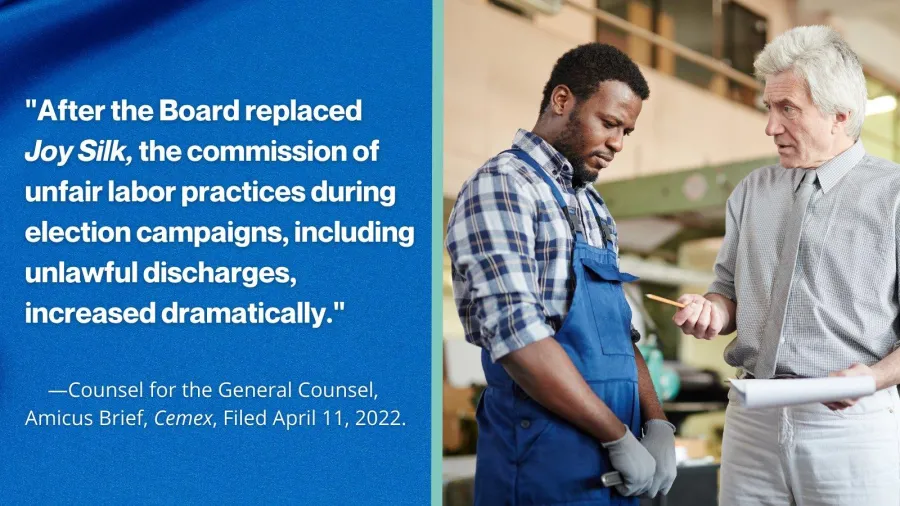NLRB General Counsel Moves to Prevent Mandatory Anti-Union Propaganda Meetings

On April 11, Jennifer Abruzzo, the Biden administration’s General Counsel to the National Relations Board, argued in a legal brief for the reinstatement of a policy that would dramatically improve the conditions for workers forming unions in this country.
Abruzzo, who was formerly counsel for the Communications of Workers of America, is seeking to restore the Joy Silk Doctrine, a policy that once prohibited companies from forcing a drawn-out secret ballot election before recognizing a union unless it had a credible reason to doubt the legitimacy of the union. She argues in her brief that the NLRB is not legally prohibited from restoring Joy Silk should do so to prevent rampant illegal union busting.
As Liz Shuler, the president of the AFL-CIO, explains, "Reinstating Joy Silk in its original form would stop employers from playing games and refusing to recognize a union when workers have unquestionable proof of majority support and would deter employers from unlawfully interfering in organizing campaigns,"
The Joy Silk Doctrine came out of a 1949 labor board ruling and was recognized for 20 years before it was replaced in the late 1960s. As Brian J. Petruska explained in the Santa Clara Law Review, the final repeal of Joy Silk in 1971 has effectively incentivized unfair labor practices because there were already no monetary penalties for this behavior.
Petruska notes that in the aftermath of Joy Silk’s repeal, NLRB complaints alleging illegal firings and intimidation of workers trying to organize unions skyrocketed, rising from about 8,000 to roughly 18,000 ten years later. The proportion of these filings that the NLRB decided had merit did not change during this period, so it’s very likely these firings were the result of ending Joy Silk.
If reinstated, Joy Silk would dramatically reduce “captive audience meetings,” which is when workers are forced to listen to union busting consultants spread misinformation about unions in an effort to influence them to vote against forming one. The Economic Policy Institute has found that 96 percent of employers mount anti-union campaigns during an organizing drive. In those cases, workers won just 48 percent of elections — compared to 72 percent of elections won when there was no union busting campaign.
